The Netherlands and water
The Dutch and water have been intertwined for centuries. With a large part of the country below sea level there is a constant awareness and respect for water.
The Dutch know how to deal with the water. Dutch engineers helped develop new protective structures around the New Orleans, which was partially destroyed by storm Katrina in 2005.
The Dutch built dikes, pumped water away from the polder with windmills, had a huge flood in 1953 and built an ingenious system to protect agains the sea; the Deltawerken (you really should check out the Wikipedia page about it: https://en.wikipedia.org/wiki/Delta_Works)
I was happy to see that water was chosen as the subject of the HiveBR Photo Contest since I've got a lot of photographs containing water and stories that go with it.
And water also is a very nice subject to work with in photography. You can play with reflections, macro photography of water drops and you can use long shutter speed to create smooth, glass like waterfalls.

Windmills
The Netherlands is well known for its windmills. There are still over 1000 different windmills. Most of them aren't actually in use anymore and only have historical value.
There are different types of windmills. A lot of them were used to grind grain into flour or tp create oil from seeds. Others were used as a sawmill to make planks from trees.
And then there were also windmills that were used as pumps.
To reclaim land from the sea, the Dutch built dikes around large bodies of water. On these dikes they built several windmills which served to pump water from the area to create new land.
This new land; called a polder, was often used as farmland for cattle or cultivation of crops.
These windmills have been replaced by electronic pumping systems many years ago, but you can still see them when you go to the polders. The photo below (my entry for the HiveBR Photocontest) was taken by me when I made a cycling trip in the polder. There are foundations that support the maintenance of these windmills so they can be kept for future generations as they are inseparably linked to Dutch history.
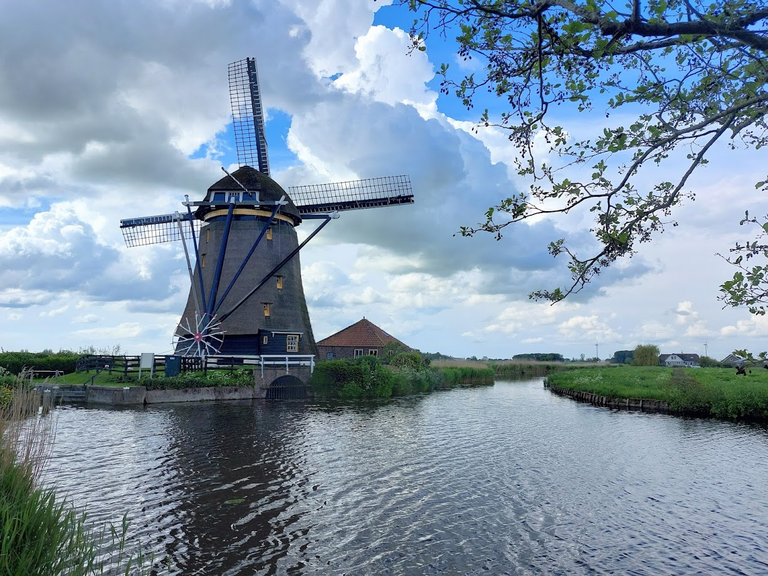

Canals
In the Netherlands we have a lot of rivers. They originate in the mountains in France, Austria, and Switzerland and flow into the North Sea in the Netherlands, but during the middle ages, the Dutch started to dig canals. These canals were used for drainage and transport between cities. In the 17th century, the canal network was significantly expanded to promote trade and shipping.
Many cities in The Netherlands, like Amsterdam, Leiden, Delft and many more, have a very extensive network of canals.
I live near the city of Leiden and this is the canal that leads to another large city; Haarlem.
They used to transport goods from one city to the other with tow boats that were pulled by horses.
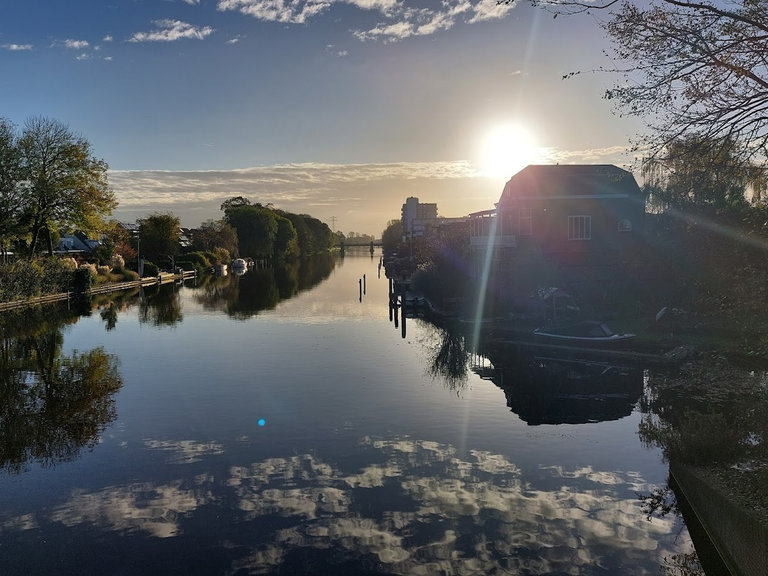

Excessive water
Being below sea level also means that the groundwater level is very high. When we have long periods of heavy rains the soil becomes saturated and the water cannot go anywhere.
Below you see a picture I took after it had rained for a couple days in a row. The lawn is more of a lake.
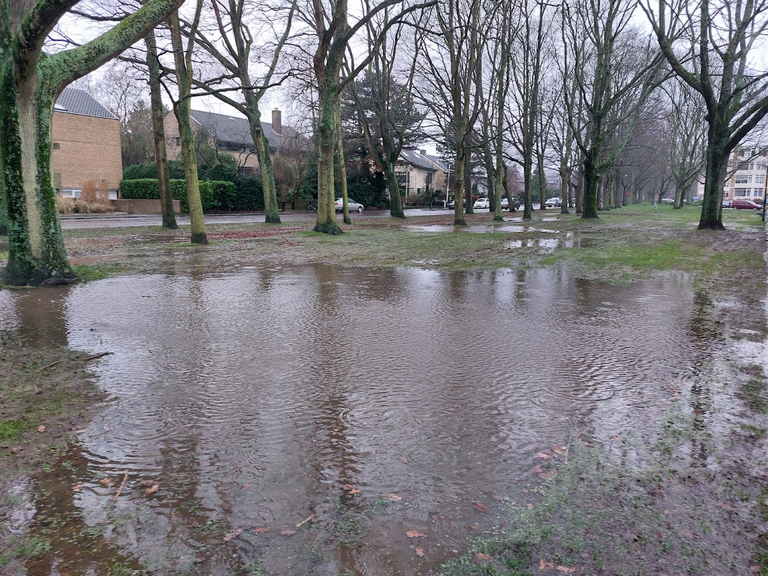

Some more water photographs
As I already mentioned earlier in this blog; water is a very nice subject for photography. I will showcase some of the different photos with this subject that I've found in my photo archive.
The following photo is from a pier in a nearby lake. It's an artificial lake. The sand was needed to build a new residential neighborhood and they used the hole that was left to create a lake for recreation. In summer you see a lot people swimming and it's also a famous fishing spot.
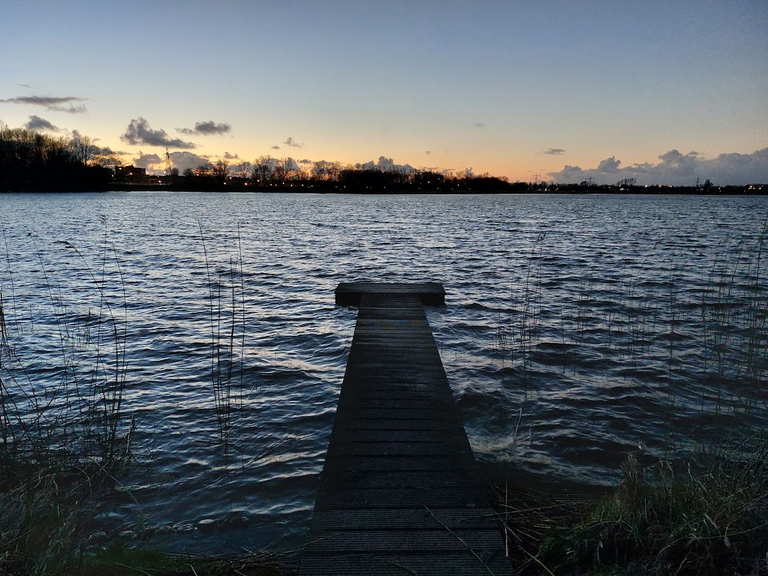
This photo was taken in Italy. We visited a lovely waterfall in Tuscany where I played a bit with the settings of my camera. By placing my camera on a rock and setting the shutterspeed a bit longer I could create this very nice 'glas-like' effect.
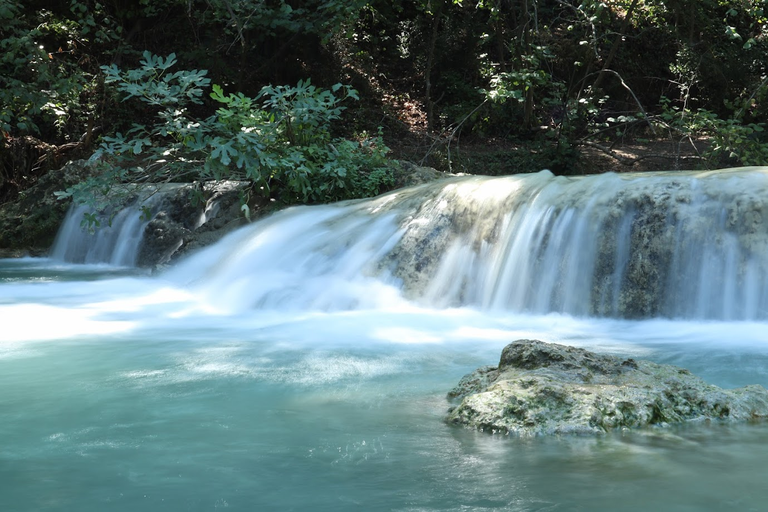
The following shot was taken with my macro lens. It's showing hundreds of tiny water drops that are stuck to a spider web. all the drops are so perfectly round. They look just like glass.
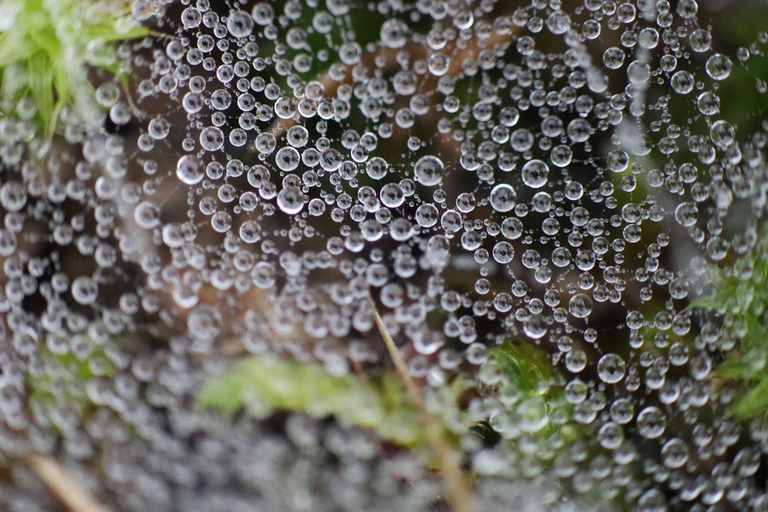
And finally one of my favorite spots with water... the beach. This is the beach where I live nearby. It's lovely to go there in the summer to go for a swim. In winter it's a bit cold, but then you can go for a walk on the beach and see the strength of the waves crashing on the beach.
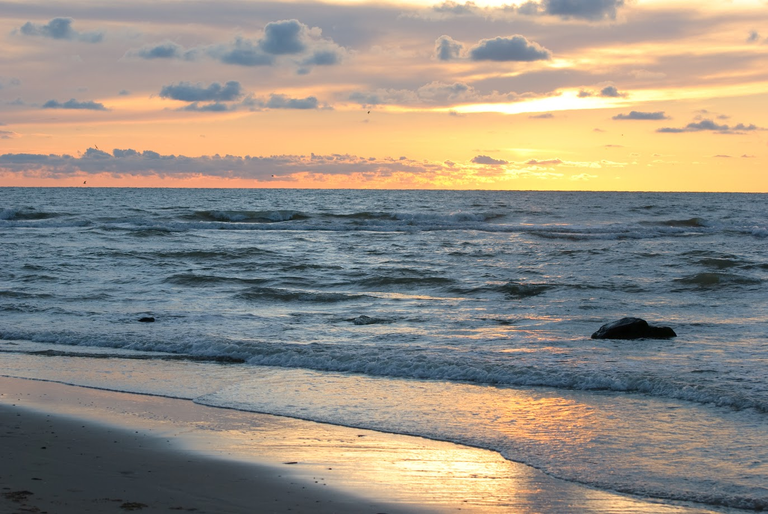
Thanks for reading my blog. Feel free to leave your comments!


About FriendlyMoose
I'm an amateur photographer with a love for indoor gardening, craft beer, and cycling. As the owner of the Cycling Community and the creator of the Topcomment initiative, I focus on fostering engagement and bringing like-minded people together.
Check out my projects below!

Topcomment

Topcomment is an initiative to reward high quality comments.

Hive Photographers

For all Hive Photographers: come join our Hive Photographer Discord Channel


A weekly blog with an overview of all the photography contests on Hive. #photocontests.


Share anything about cycling in the Cycling Community
I visited the Netherlands in 2022 when I went to HiveFest in Amsterdam... As I stayed at my friend's home in The Hague, I was traveling by train during those 4-5 days... It was great to see nature from the train window, all those canals and water everywhere... As I had a plane flight from Eindhoven, I was lucky to have an opportunity to see that part of the country too! Definitely planning to repeat my visit and stay a bit more...
Btw. It's interesting that with so much water, the most popular were windmills... Here in Spain, water is a very scarce resource, and in the past, they had many water mills (and not windmills)... which is strange to realize... Not sure about the reasons... Maybe they didn't know the technology... 🤔
I have picked this post on behalf of the @OurPick project! Check out our Reading Suggestions Posts!
Please consider voting for our Liotes HIVE Witness. Thank you!
Cool! There is enough to see and do over here.
If you want to get energy out of flowing water you need water mills. In The Netherlands we needed to move the water, so you need wind 😀
You are right... I didn't see too many mountains in the Netherlands... water can't "RUN" without heights... 😃
Your comment is upvoted by @topcomment
More info - Support @topcomment - Discord
Interesting places explored with water, timing and exposure captured your story perfectly!
Giving detail on each photo, another reason to enjoy photography such as this.
So much around us one forgets how excess water some regions have to secure lands to insure stability and livelihoods.
@tipu curate 2
Thank you!
Upvoted 👌 (Mana: 47/67) Liquid rewards.
an atmosphere that I have never seen I really want to visit there too
what an amazing photo. all your photos share i like it
I feel like I want to be there to enjoy the view directly 😍
Despite the struggles - I absolutely love the landscape with rivers, canals, windmills etc. Such lovely shots - the water stuck to the spiders web is really unique.
Thanks!
I'd say the waterfalls look like milk, or some kind of milkshake... haha.... the water drops are great! I loved that picture, although they are all very nice. I also enjoyed learning about the system created by the Dutch. 😉
This post was shared and voted inside the discord by the curators team of Discovery-it in collaboration with Visual Shots community.
Discovery-it is also a Witness, vote for us here
Delegate to us for passive income. Check our 80% fee-back Program
!discovery shots
!PIZZA
!LOL
Posted using Hive Images
Beautiful pictures, thank you for sharing them.
!DIY
!BBH
You can query your personal balance by
@edgerik just sent you a DIY token as a little appreciation for your post dear @friendlymoose! Feel free to multiply it by sending someone else !DIY in a comment :) You can do that x times a day depending on your balance so:!DIYSTATSDelegate your HP to the hive-br.voter account and earn Hive daily!
🔹 Follow our Curation Trail and don't miss voting! 🔹
Your post was manually curated by @xlety.Very impressive photos! The macro lens shows an extraordinary beauty. The windmills in Netherlands have impressive designs too.
And the myth about the windmills is even more interesting. They used them to push water with wind, which sounds a bit like fantasy, haha. I guess they used them to pump the water out and thus created the canals in the process of expanding the land. Yes? 😂😆
Beautiful macro of these bubbles. I thought they were eggs at first.
$PIZZA slices delivered:
(7/15) @jlinaresp tipped @friendlymoose